Case report: a Chinese girl like atypical Rubinstein–Taybi syndrome caused by a novel heterozygous mutation of the EP300 gene, BMC Medical Genomics
Por um escritor misterioso
Last updated 14 janeiro 2025
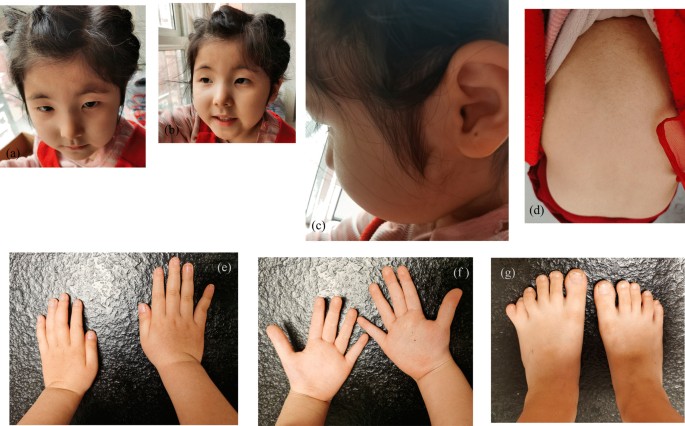
Background Rubinstein–Taybi syndrome (RSTS) is an extremely rare autosomal dominant inheritable disorder caused by CREBBP and EP300 mutations, while atypical RSTS harbouring variant from the same genes but not obvious resembling RSTS. There are only a few cases of Menke–Hennekam syndrome (MKHK) with variant of exon 30 or 31 of CREBBP or EP300 gene have been reported that not resembling RSTS recent years. Atypical RSTS cannot be accurately classified as MKHK, nor is it easy to identify the obvious classic characteristics of RSTS. The clinical manifestations and genetic variation of atypical RSTS are not fully understood. Case presentation We present a Chinese core family with a girl had recurrent respiratory tract infection and developmental delay. The patient with language and motor mild development retardation, she has slight abnormal facial features, mild hirsutism and post-axial hexadactylia of left foot. Her cisterna magna is enlarged to connect with the fourth ventricle, and the ventricular system is enlarged. She has a malacia beside the posterior horn of the left lateral ventricle. The patient has primary low immunoglobulin G and A, but her level of immunoglobulin M content in blood is normal. The patient harbors a novel heterozygous frameshift variant of c.2499dupG in exon 14 of EP300 gene, that it is proved to de novo origin. The mutation is judged to be a pathogenic mutation, and it has high-grade pathogenic evidence. Conclusion The clinical and genetic evaluation of this case corroborates that clinical features caused by c.2499dupG in exon 14 of EP300 are less marked than RSTS2 patient although it is difficult to establish an accurate genotype–phenotype correlation. Our additional case also helps to deepen the clinical and genetic spectrum in this disorder. The case provides a novel mutation of EP300 and enriches the phenotypes related with the gene. We have contributed new variation and disease information for guardians and doctors to broaden the knowledge about EP300-RSTS genotype and phenotype, this may contribute to ameliorate the health management of patients and improve the genetic counseling to the families.

Rubinstein‐Taybi syndrome in Chinese population with four novel

Schematic representation of p300 protein and EP300 gene, including

Molecular analysis of the CBP gene in 60 patients with Rubinstein

A Novel CREBBP in-Frame Deletion Variant in a Chinese Girl with
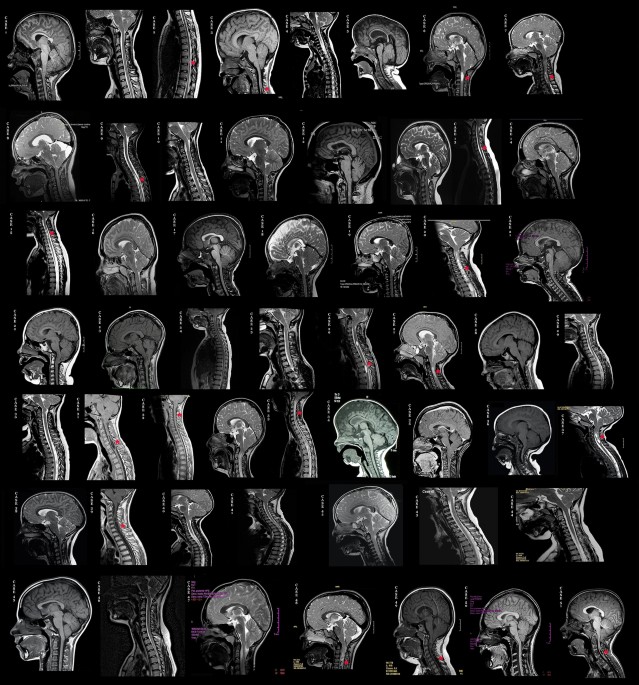
Chiari 1 malformation and exome sequencing in 51 trios: the
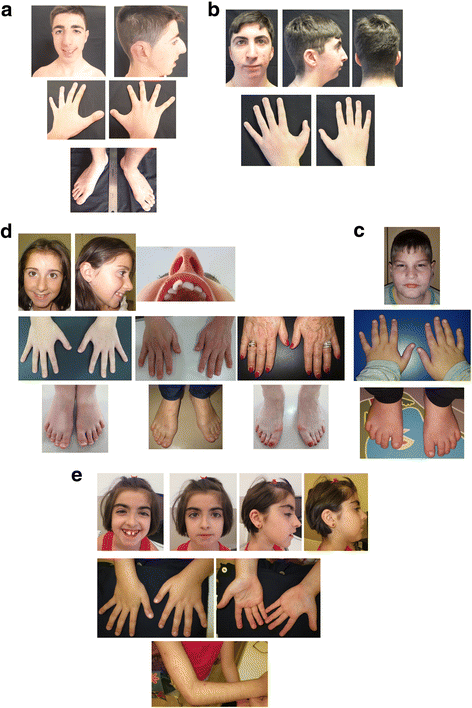
Rubinstein-Taybi 2 associated to novel EP300 mutations: deepening
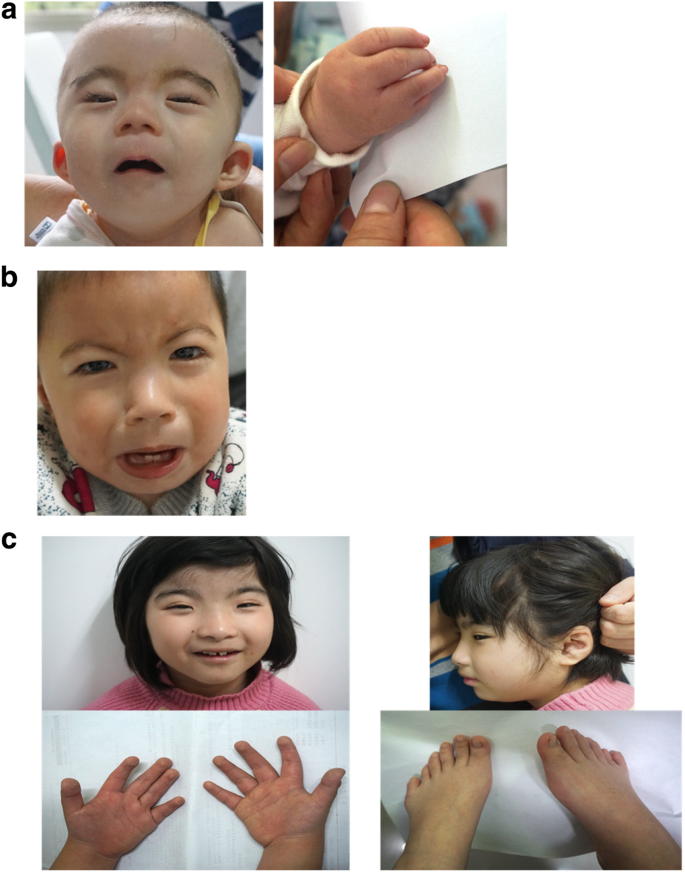
Next generation sequencing identified two novel mutations in NIPBL
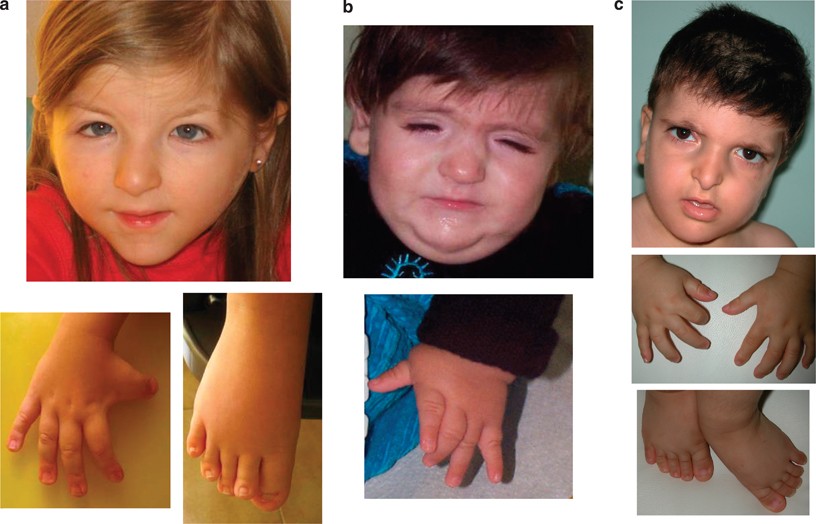
High frequency of copy number imbalances in Rubinstein–Taybi
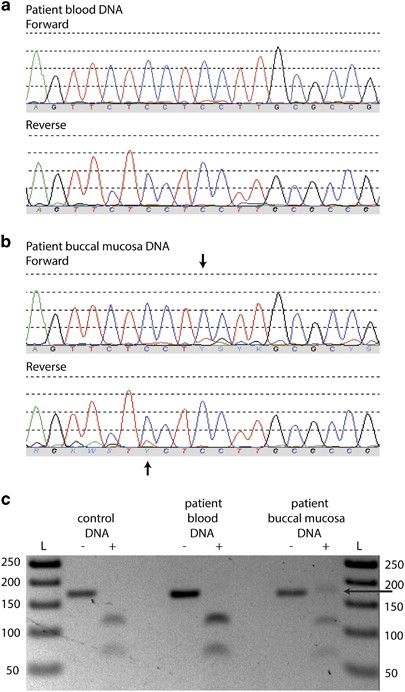
Mosaic CREBBP mutation causes overlapping clinical features of

PDF) Rubinstein-Taybi Syndrome: A Model of Epigenetic Disorder
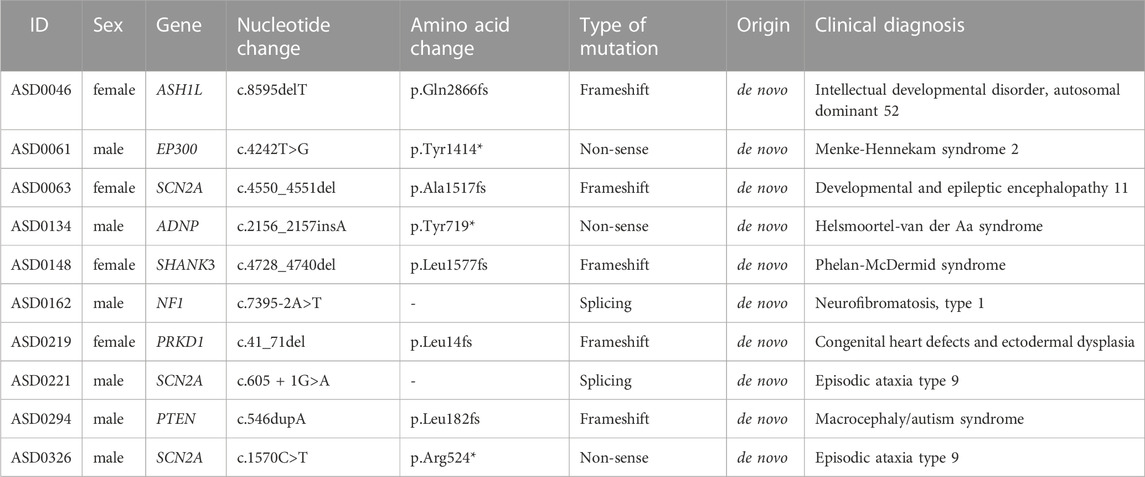
Frontiers Genetic diagnostic yields of 354 Chinese ASD children

PDF) Genetic heterogeneity in Rubinstein-Taybi syndrome

PDF) Genetic heterogeneity in Rubinstein-Taybi syndrome
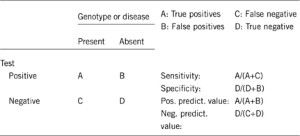
Rubinstein–Taybi syndrome (CREBBP, EP300)
Recomendado para você
-
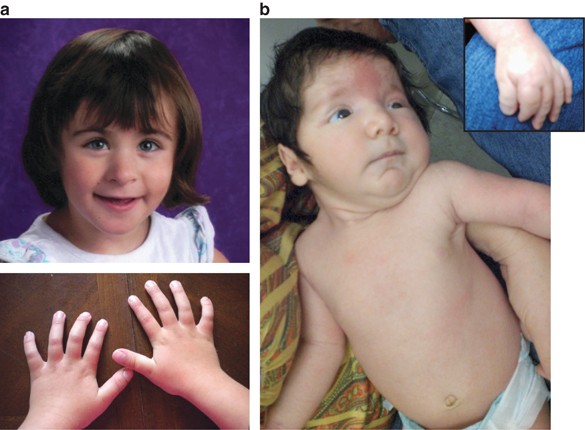 Exon deletions of the EP300 and CREBBP genes in two children with14 janeiro 2025
Exon deletions of the EP300 and CREBBP genes in two children with14 janeiro 2025 -
Rubinstein-Taybi Syndrome 114 janeiro 2025
-
 Rubinstein-Taybi syndrome: Dental manifestations and management14 janeiro 2025
Rubinstein-Taybi syndrome: Dental manifestations and management14 janeiro 2025 -
 PDF) An unusual presentation of Rubinstein-Taybi Syndrome with bilateral postaxial polydactyly Corresponding author14 janeiro 2025
PDF) An unusual presentation of Rubinstein-Taybi Syndrome with bilateral postaxial polydactyly Corresponding author14 janeiro 2025 -
 Ocular symptoms in patients with Rubinstein-Taybi syndrome; 117 out of14 janeiro 2025
Ocular symptoms in patients with Rubinstein-Taybi syndrome; 117 out of14 janeiro 2025 -
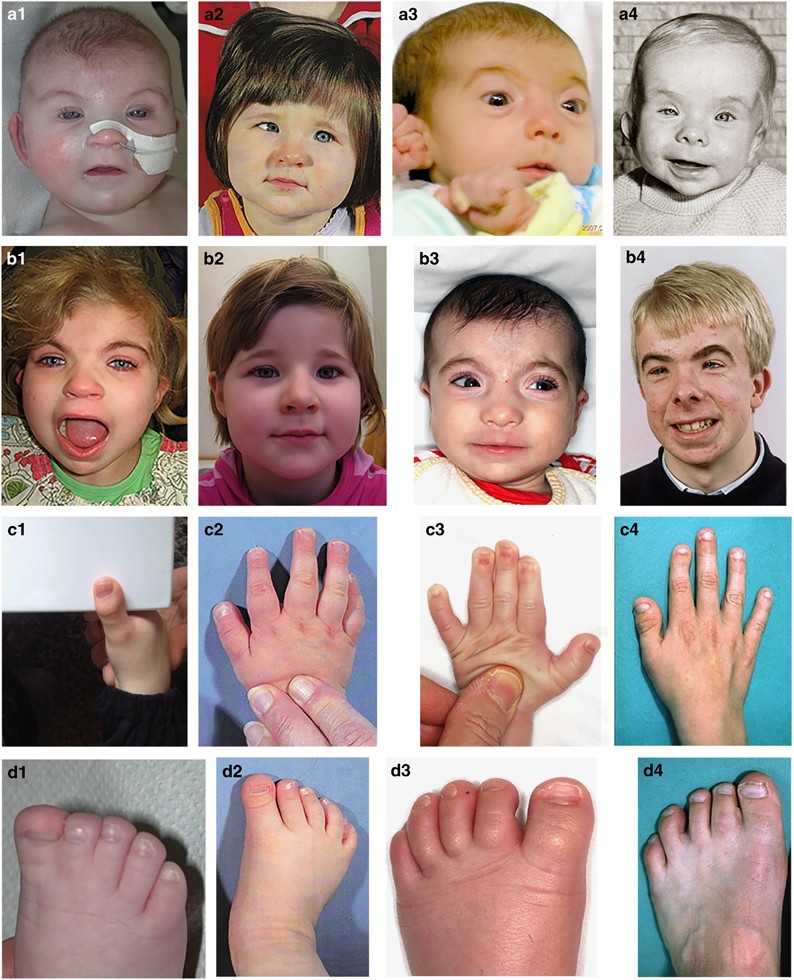 Analysis of mutations within the intron20 splice donor site of CREBBP in patients with and without classical RSTS14 janeiro 2025
Analysis of mutations within the intron20 splice donor site of CREBBP in patients with and without classical RSTS14 janeiro 2025 -
 First case report of inherited Rubinstein-Taybi syndrome associated with a novel EP300 variant – topic of research paper in Clinical medicine. Download scholarly article PDF and read for free on CyberLeninka open14 janeiro 2025
First case report of inherited Rubinstein-Taybi syndrome associated with a novel EP300 variant – topic of research paper in Clinical medicine. Download scholarly article PDF and read for free on CyberLeninka open14 janeiro 2025 -
Chromosome 16p13.3 Contiguous Gene Deletion Syndrome including the SLX4, DNASE1, TRAP1, and CREBBP Genes Presenting as a Relatively Mild Rubinstein- Taybi Syndrome Phenotype: A Case Report of a Saudi Boy. - Document14 janeiro 2025
-
 PDF) FISH studies in 45 patients with Rubinstein-Taybi syndrome: Deletions associated with polysplenia, hypoplastic left heart and death in infancy14 janeiro 2025
PDF) FISH studies in 45 patients with Rubinstein-Taybi syndrome: Deletions associated with polysplenia, hypoplastic left heart and death in infancy14 janeiro 2025 -
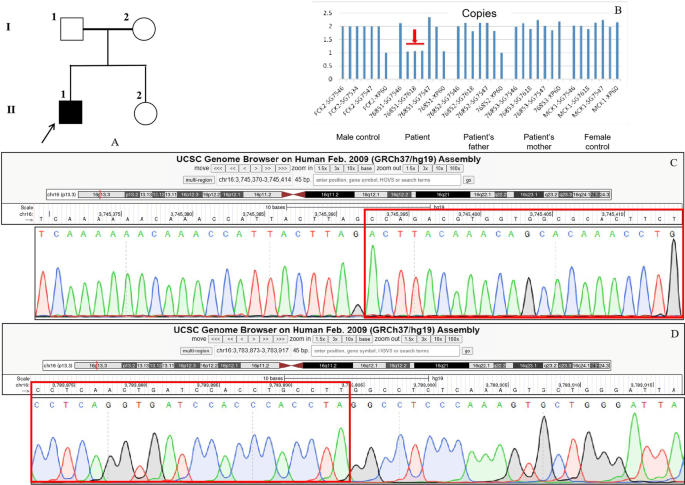 A novel CREBBP mutation and its phenotype in a case of Rubinstein–Taybi syndrome, BMC Medical Genomics14 janeiro 2025
A novel CREBBP mutation and its phenotype in a case of Rubinstein–Taybi syndrome, BMC Medical Genomics14 janeiro 2025
você pode gostar
-
 Rambo' ganhará última aventura nos cinemas em 2015 - GQ14 janeiro 2025
Rambo' ganhará última aventura nos cinemas em 2015 - GQ14 janeiro 2025 -
 Fundamentos de Ajedrez: El libro numero 1 del Mozart del Ajedrez by Capablanc… – ASA College: Florida14 janeiro 2025
Fundamentos de Ajedrez: El libro numero 1 del Mozart del Ajedrez by Capablanc… – ASA College: Florida14 janeiro 2025 -
 Touhou Tower Assault Codes - Roblox December 202314 janeiro 2025
Touhou Tower Assault Codes - Roblox December 202314 janeiro 2025 -
 Naruto Shippuden: Ultimate Ninja 5 (MODO HISTÓRIA COMPLETO PT-BR)14 janeiro 2025
Naruto Shippuden: Ultimate Ninja 5 (MODO HISTÓRIA COMPLETO PT-BR)14 janeiro 2025 -
 All Pre-Order Bonuses & Release Date for Super Mario Wonder14 janeiro 2025
All Pre-Order Bonuses & Release Date for Super Mario Wonder14 janeiro 2025 -
 Stumble Simulator Guys - Baixar APK para Android14 janeiro 2025
Stumble Simulator Guys - Baixar APK para Android14 janeiro 2025 -
Adrien/Cat Noir as an ANIME character(Fanart is NOT mine14 janeiro 2025
-
 Smartwatch Haylou lite Global Original - HAYLOU SOLAR lite14 janeiro 2025
Smartwatch Haylou lite Global Original - HAYLOU SOLAR lite14 janeiro 2025 -
 2048 Chain Cube 3D: Merge Game by ICEBEAR., JSC14 janeiro 2025
2048 Chain Cube 3D: Merge Game by ICEBEAR., JSC14 janeiro 2025 -
 MOTOROLA Moto G4 Play XT1609 Specification14 janeiro 2025
MOTOROLA Moto G4 Play XT1609 Specification14 janeiro 2025
